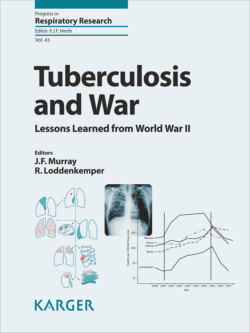Читать книгу Tuberculosis and War - Группа авторов - Страница 55
На сайте Литреса книга снята с продажи.
Alcohol Consumption
ОглавлениеA further, difficult to quantify, potential risk factor for TB is alcohol abuse. The epidemiologic difficulties are similar to those of smoking, that is, the direct and indirect potential confounding with socio-economic factors. Such factors and specific behaviors of substance abusers in general may put them at an increased risk of acquisition of infection with tubercle bacilli rather than at an increased risk of progression to TB subsequent to infection. Experimental animal studies seem to establish alcohol as a risk factor for the latter mechanism, although animal experiments with substance abuse are to be viewed particularly critical: most animals quite in contrast to humans – albeit with some notable exceptions – have little “natural” inclination for intoxication. In this context, alcohol abuse is also discussed in the following. Again, the overall differential population-attributable fraction must be fairly small as a substantial quantitative change in massive alcohol abuse at the population level is much less likely and widespread than for instance famine and protein energy malnutrition.
The association of alcohol abuse with TB is well known [42]. However, again an increased consumption of alcohol is not described as a specific risk factor for TB during WWII, but may have been an additional one. Daniels mentions that a fall in alcohol consumption in France due to the introduction of rationing wines and spirits during the war may have been responsible in part for the decline in TB mortality. He underlines this assumption by adding “a marked fall in morbidity and mortality from diseases attributable to alcoholism, a fall not paralleled in any disease other than TB” [3].
